Macaque Species
Macaques are a diverse and highly successful group, with the broadest geographical distribution of any nonhuman primate, from the tropical islands of Sulawesi to the snow-covered Atlas Mountains in Morocco. There are now 25 recognised extant macaque species. The most ancestral macaque species is the Barbary macaque (M. sylvanus), the only living species found outside of the Asian continent, inhabiting Morocco, Algeria and Gibraltar. The Barbary macaque is the only extant member of the sylvanus clade, which originated in Africa and was the first of seven extant macaque clades to diverge. Approximately 3 million years ago, several radiation events brought macaques from Africa to Asia, giving rise to six other macaque clades. Once they began to populate Asia, the macaques separated into two overarching groups; one that later diverged to form the silenus and sulawesi clades and another which later separated into the sinica, fascicularis, arctoides and mulatta clades, in that order.
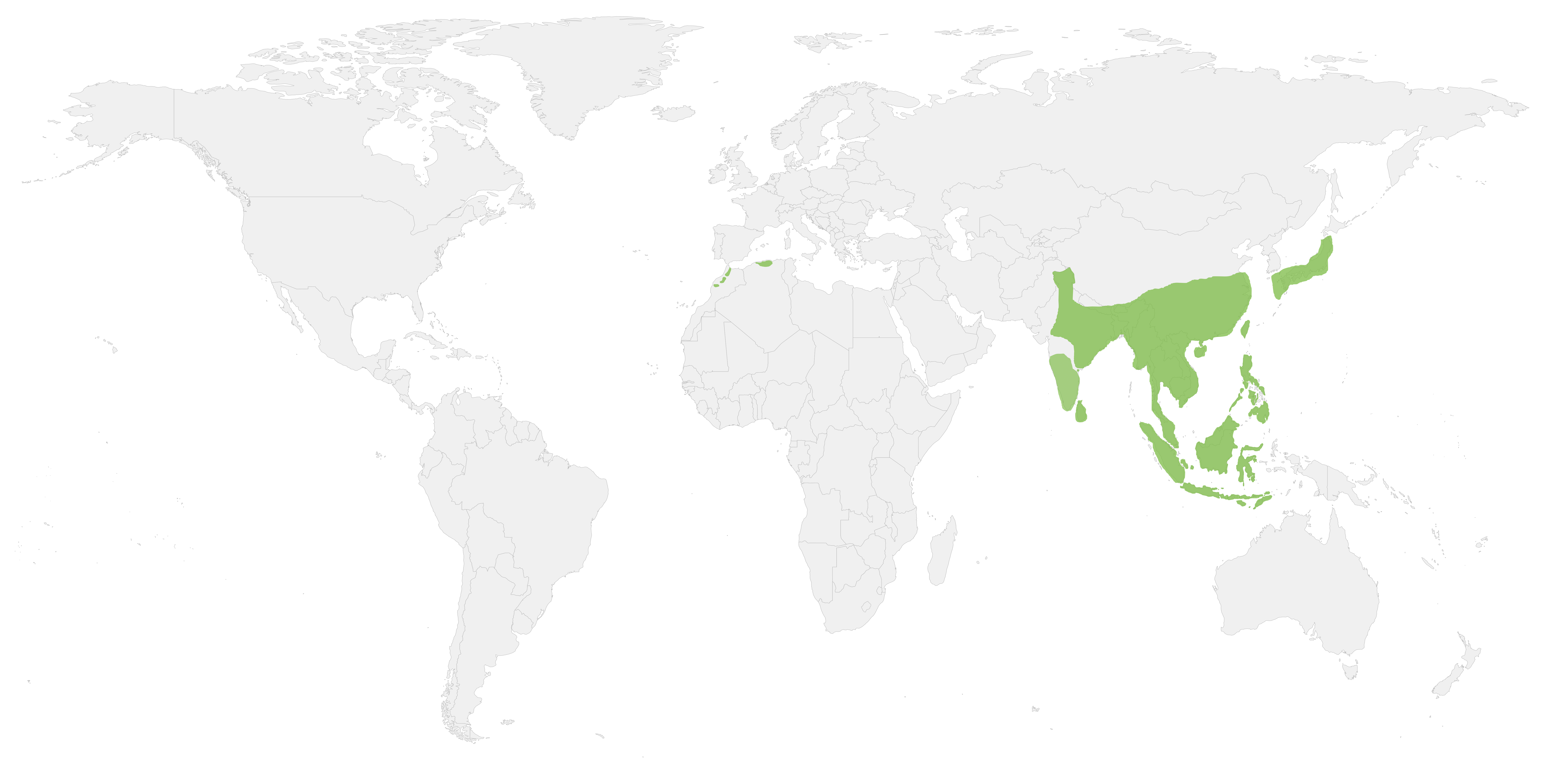
There are now 25 recognised extant macaque species. The most ancestral macaque species is the Barbary macaque (M. sylvanus), the only living species found outside of the Asian continent, inhabiting Morocco, Algeria and Gibraltar. The Barbary macaque is the only extant member of the sylvanus clade, which originated in Africa and was the first of seven extant macaque clades to diverge. Approximately 3 million years ago, several radiation events brought macaques from Africa to Asia, giving rise to six other macaque clades.

Once they began to populate Asia, the macaques separated into two overarching groups; one that later diverged to form the silenus and sulawesi clades and another which later separated into the sinica, fascicularis, arctoides and mulatta clades, in that order.
The silenus clade encompasses the northern pig-tailed (M. leonina), southern pig-tailed (M. nemestrina), Pagai (M. pagensis), Siberut (M. siberu) and lion-tailed (M. silenus) macaque species. The northern pig-tailed macaque inhabits northern Asian regions such as China and India, whereas the southern pig-tailed macaque can be found in southern Asian countries including, Indonesia and Malaysia. The other species within the silenus clade have much smaller ranges. The lion-tailed macaque inhabits southern India, while both Pagai and Siberut macaques live on Siberut Island in Indonesia.
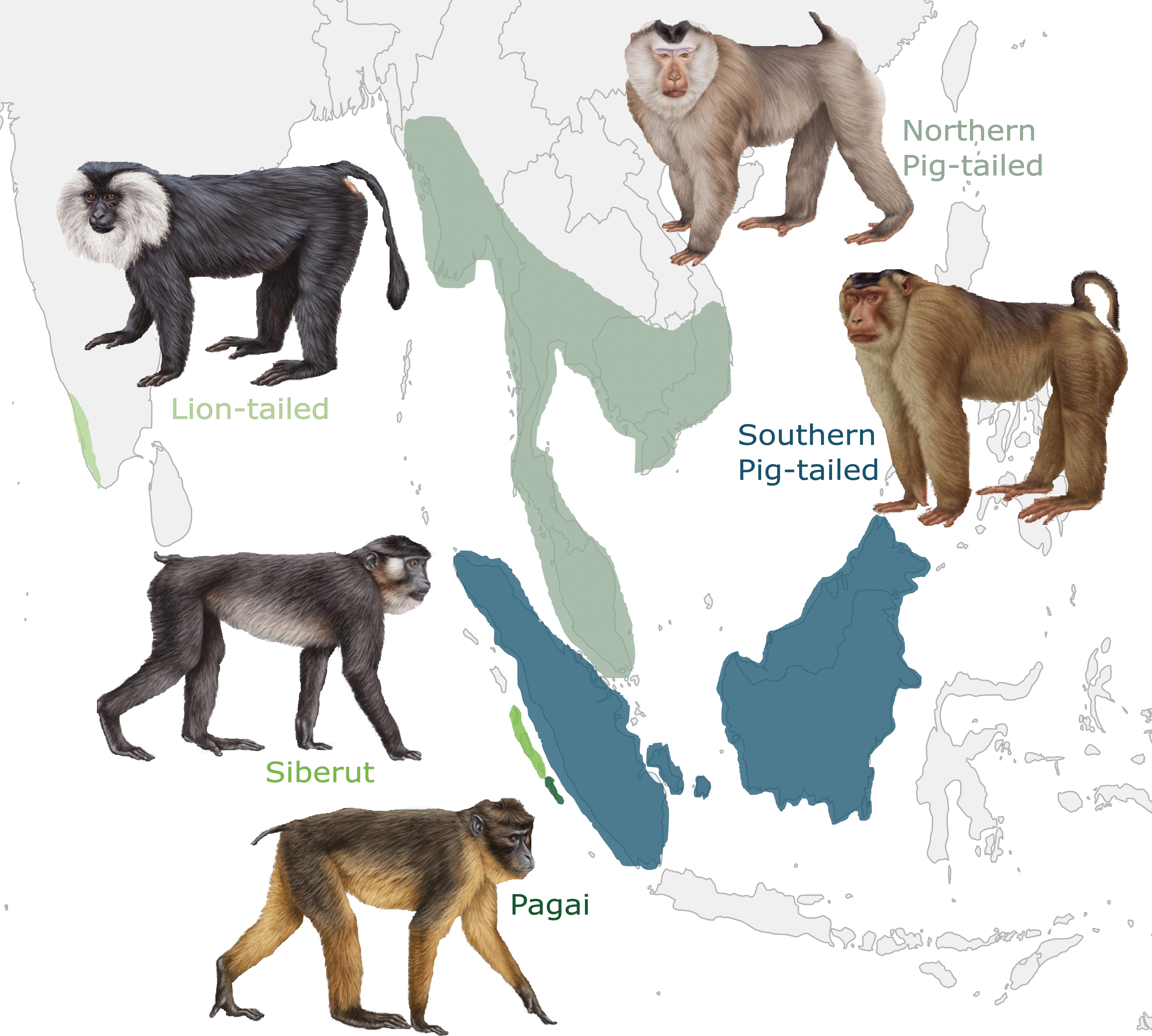
The Sulawesi clade comprises the seven macaque species that inhabit Sulawesi island in Indonesia: Heck’s (M. Hecki), moor (M. maura), Gorontalo (M. nigrescens), Tonkean (M. tonkeana), crested (M. nigra), Muna-Buton (M. ochreata brunnescens) and booted macaques (M. ochreata ochreata).
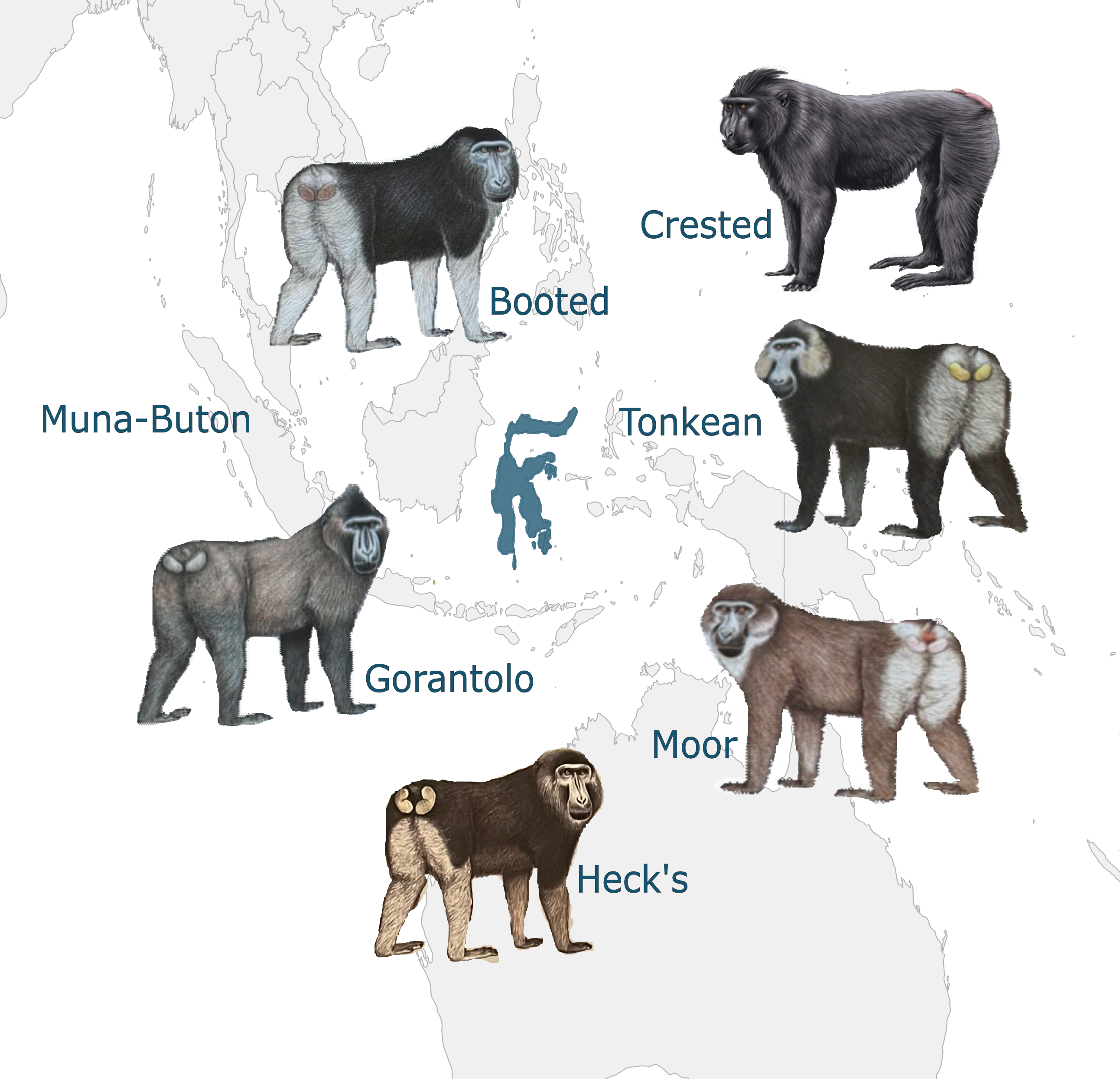
The sinica clade includes the bonnet (M. radiata), toque (M. sinica), Assamese (M. assamensis), Tibetan (M. thibetana), Arunachal (M. munzala), white-cheeked (M. leucogenys) and Sela (M. selai) macaques. The toque macaque is the only species within the sinica clade to inhabit Sri Lanka, while Assamese macaques inhabit regions in southern Asia including Thailand and India. The remaining species within the sinica clade have narrower distributions. Bonnet macaques can be found in southern India, sela macaques reside only in the Arunachal region of India, while Tibetan macaques are found in Tibet and east-central China. The white-cheeked and Sela macaques have similar geographical distributions to the Arunachal and Tibetan macaques, residing in Tibet and along the Arunachal border.
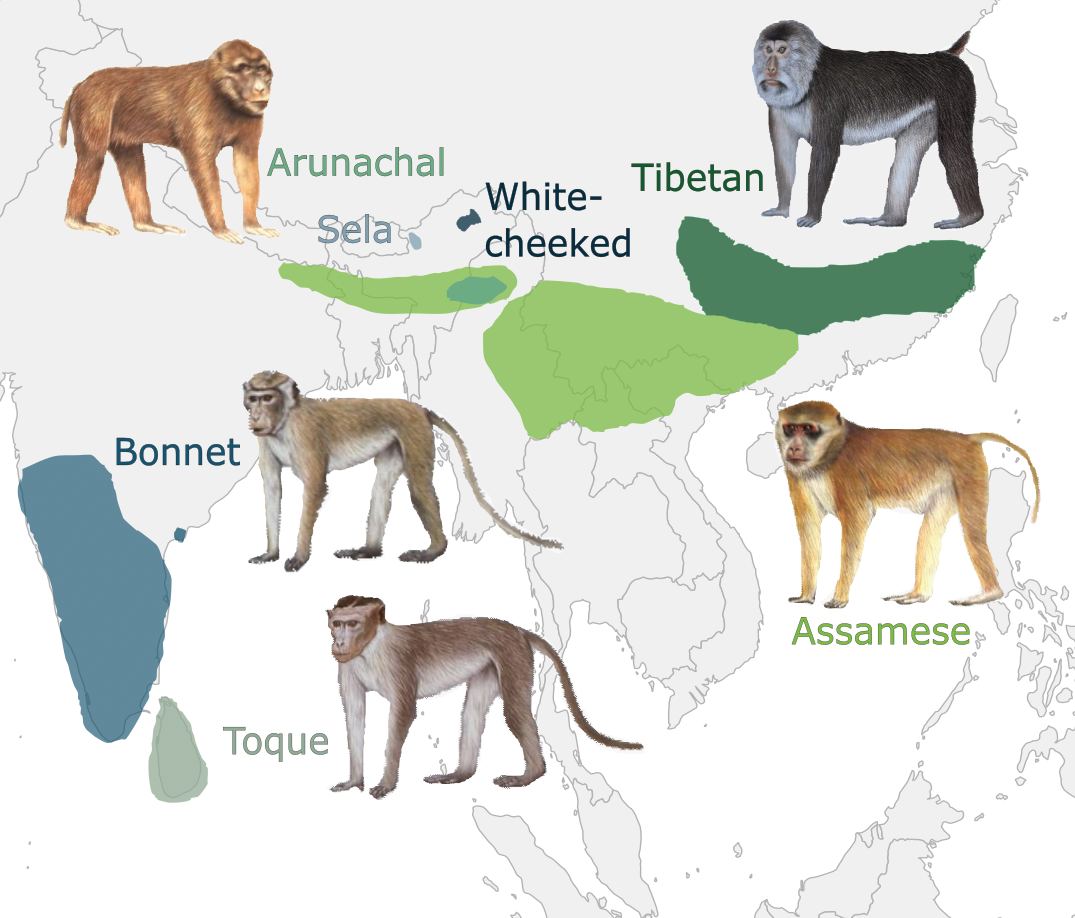
Long-tailed macaques (M. fascicularis) are grouped alone in their own monotypic clade named fascicularis. They have the widest distributions of any macaque species, spanning multiple Asian regions including Bangladesh, India, Indonesia, and Thailand.
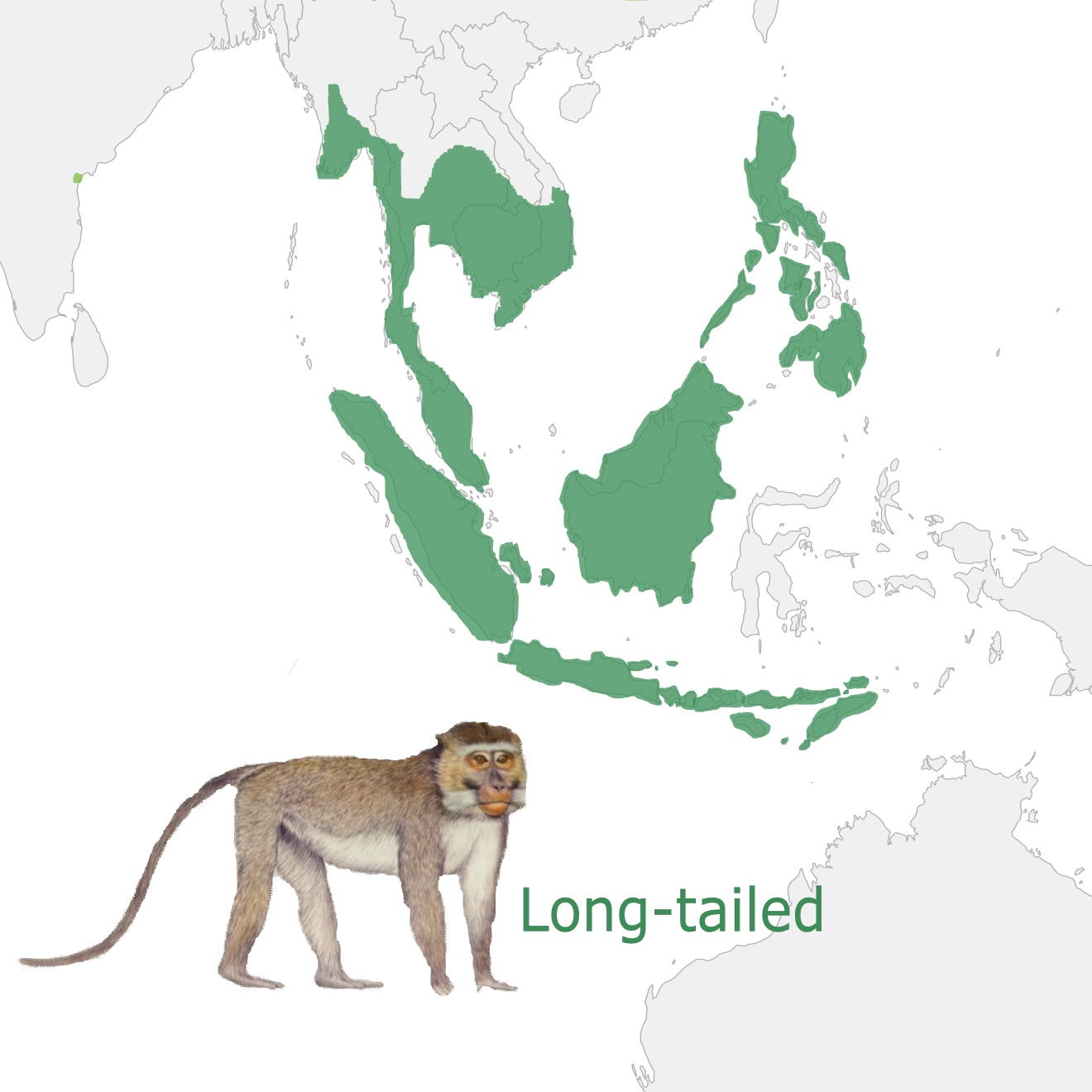
Similarly to the long-tailed macaque, The stump-tailed macaque (M. arctoides) also resides in its own arctoides clade. Stump-tailed populations inhabit regions including Hong-Kong, Cambodia and Thailand.
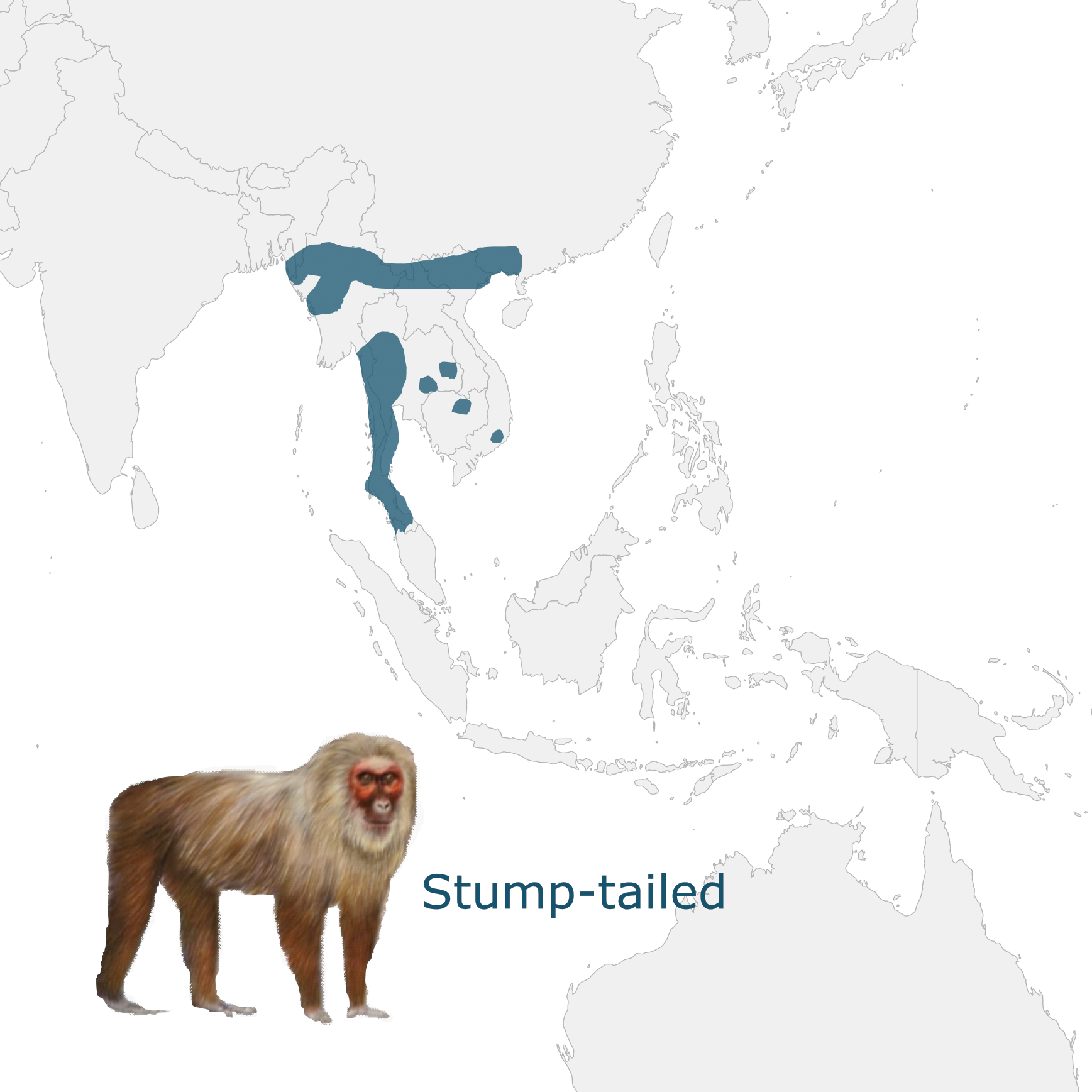
Finally, the mulatta clade includes the rhesus (M. mulatta), Japanese (M. fuscata) and Formosan macaques (M. cyclopis). Japanese and Formosan macaques are both native to Japan, while rhesus macaques have a broader distribution, occupying areas in Asia including India and China.
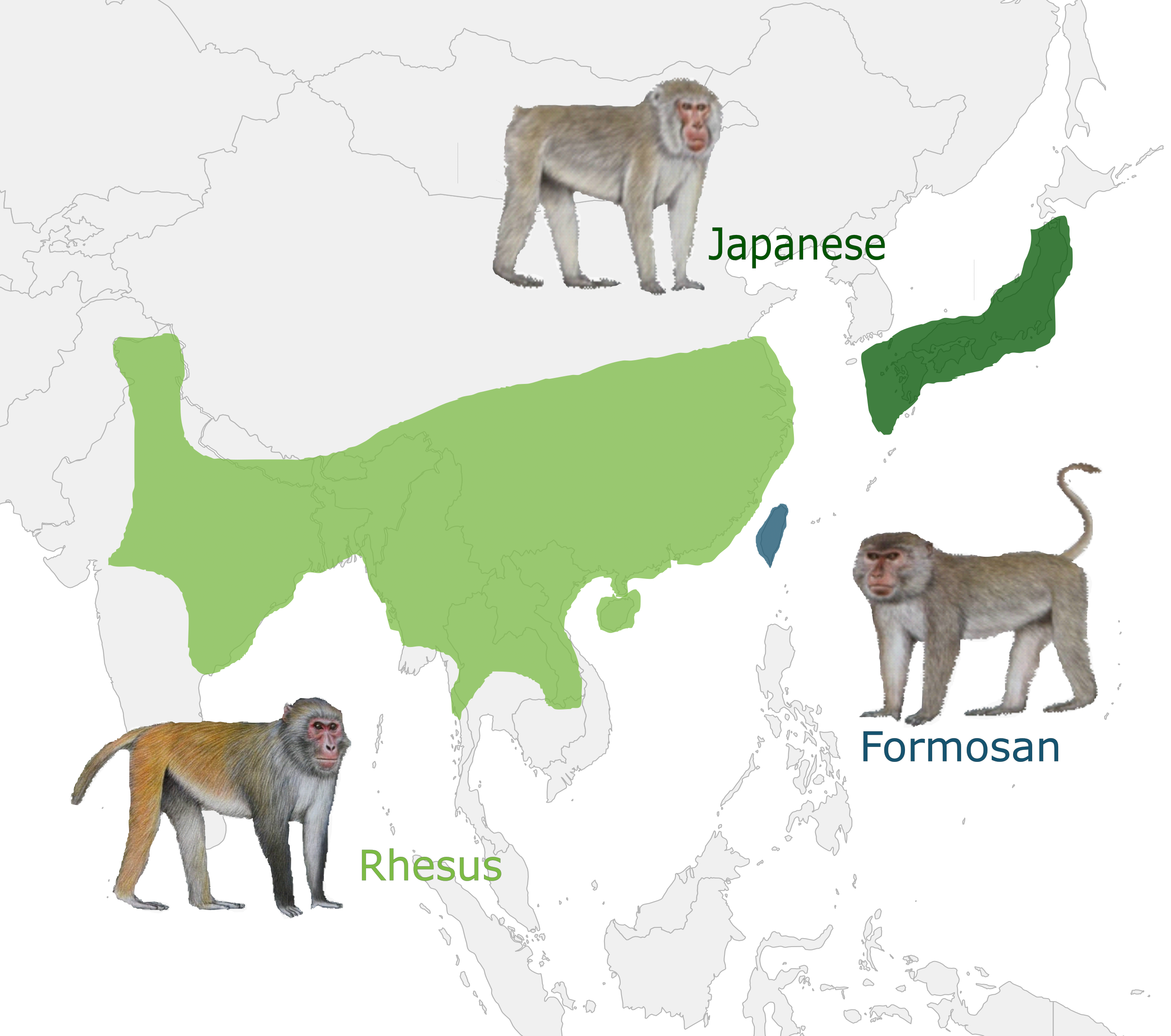
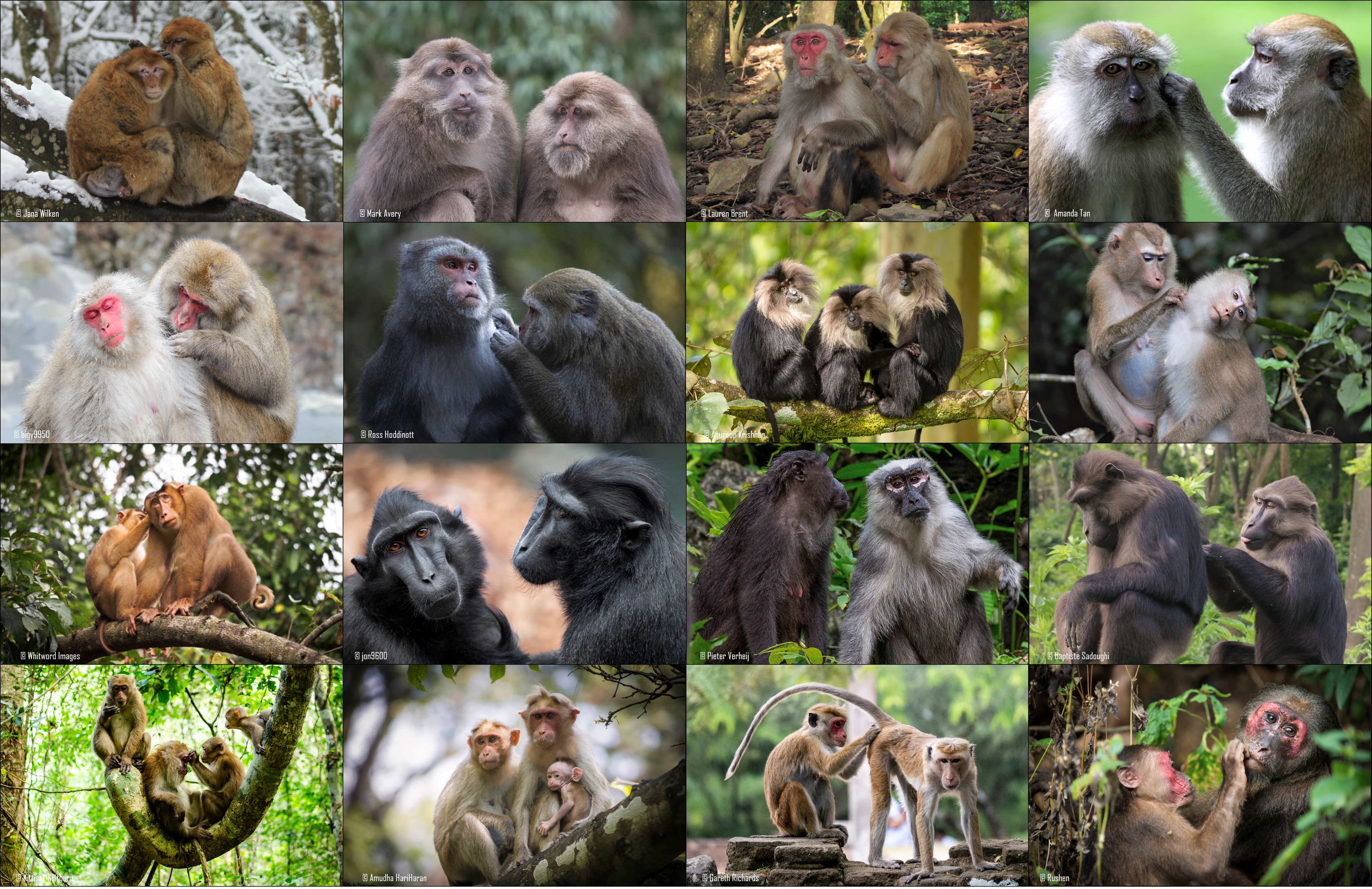
The image above shows 16 of the 25 extant macaque species, from top left to right: Barbary (M. sylvanus), Tibetan (M. thibetana), rhesus (M. mulatta), long-tailed (M. fascicularis), Japanese (M. fuscata), formosan (M. cyclopis), lion-tailed (M. silenus), northern pig-tailed (M. leonina), southern pig-tailed (M. nemestrina), crested (M. nigra), moor (M. maura), tonkean (M. tonkeana), Assamese (M. assamensis), bonnet (M. radiata), Toque (M. sinica), stump-tailed (M. arctoides).
The Complex Social Lives Of Macaques
With each species adapted to thrive in their natural habitat, different macaque species exhibit not only varying morphological adaptations, but also different social behaviour. All macaque species share a similar social organisation: they live in large, mixed-sex social groups of up to several hundred animals. In all species, males disperse to a new group once they reach sexual maturity, while females remain in the group where they were born throughout their lives. However, different macaque species differ greatly in the structure of their social networks. In some macaque species, individuals form strong bonds with only a few preferred partners, whereas in other species relationships are more undifferentiated and individuals are tolerant towards most of their group members. Similarly, in some species only a single or a few males breed and sire all offspring, whereas in others, it’s a bit of a free-for-all!
Quiz
Why not try our fun quiz, where you answer 10 questions to find out which of 6 species of macaque matches your personality best? It only takes 5-10 minutes - perfect to fill coffee breaks or as a procrastination activity (we won’t tell anyone)!